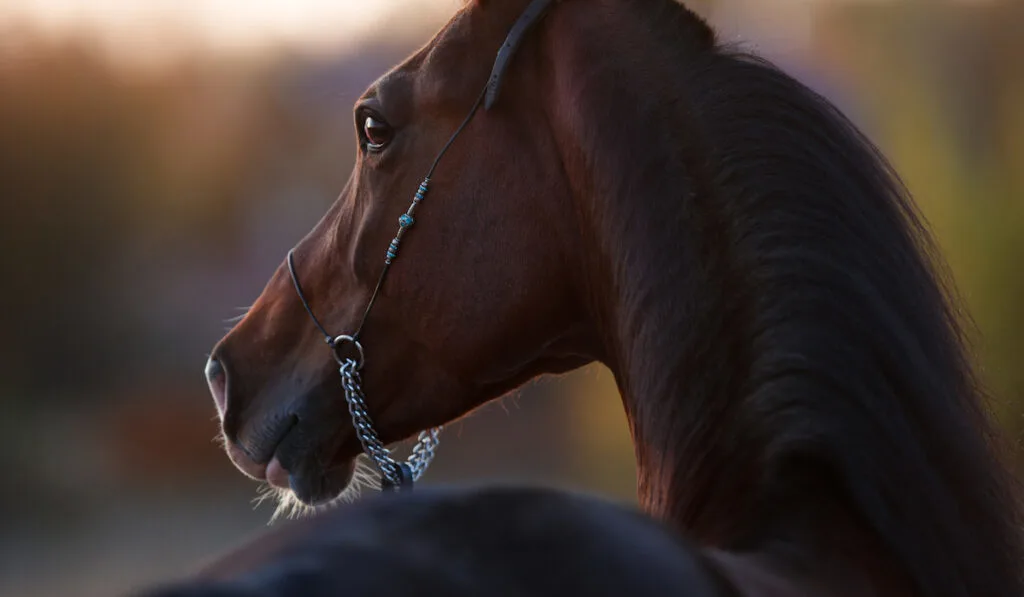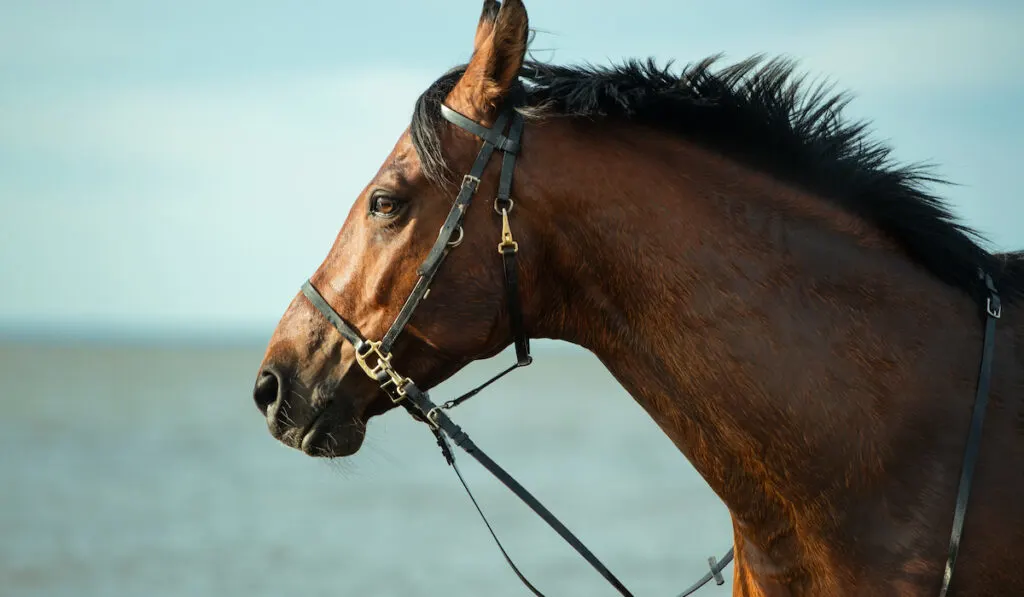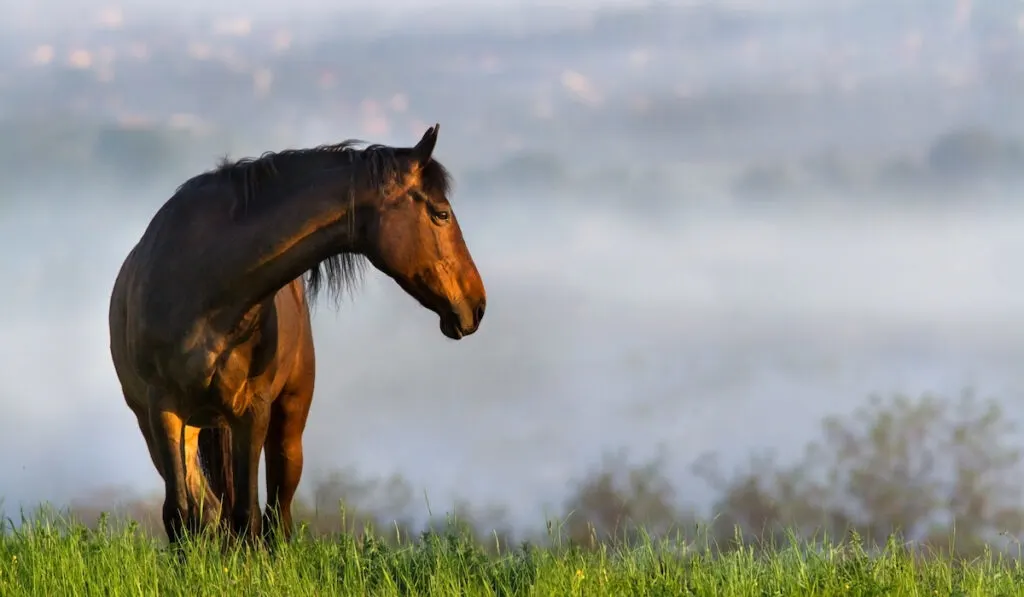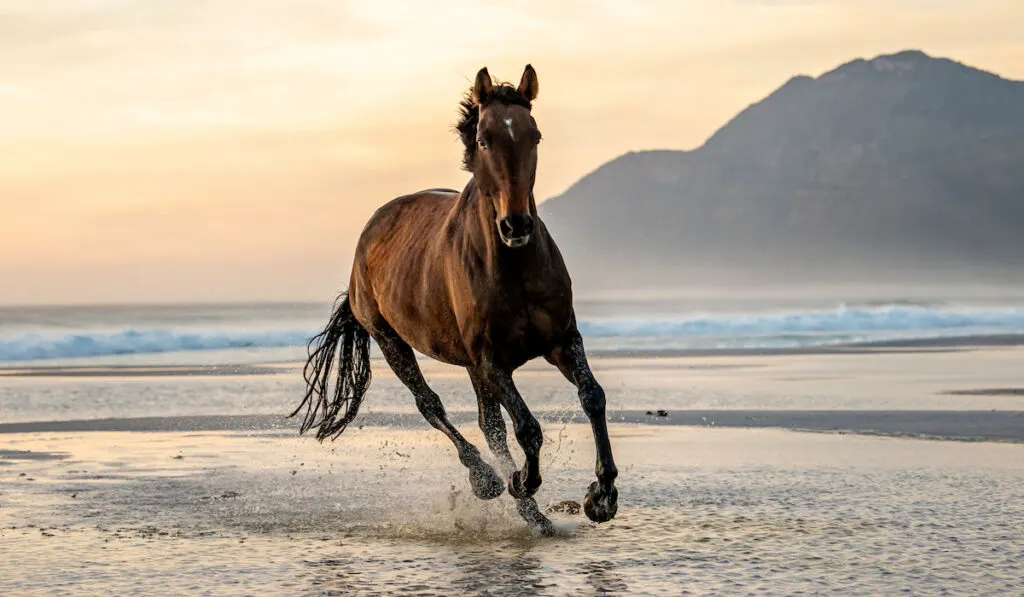There are hundreds of different breeds, styles, sizes, and disciplines when it comes to horses. Horses’ characteristics vary depending on their background, purpose and overall living conditions. Another characteristic that differs from horse to horse is color.

The color of a horse’s coat was a bit more important before most horses were domesticated and played a part in whether they needed to blend in, camouflage, or hide from a predator nearby in the wild. But today, color simply paints a pretty picture for us to look at.
Table of Contents
Breaking Down Color
A horse’s coat color is determined by his genes, but can change over time and depending on the conditions they live in.
Here’s a few examples: If a horse lives outdoors with ideal food, water, and exercise, his coat will be bright-colored, shiny, and full because he is getting everything he needs.
If a horse is mal-nourished (or maybe getting a little bit older), his coat will appear dull and less colorful.
In the summertime, a horse who spends the majority of his time outside will begin to get sun-bleached, resulting in a different looking coat than he carries the rest of the year.
There are also some instances where a horse is born one color and changes over the course of his life. Believe it or not, most horses who appear white or light gray were not born that way.
Many times a horse will be born black or bay and transition into a lighter color as he gets older.
This happens due to a “strengthened chromogenesis (pigment production) which occurs in the foal and young horse, and then gradually weakens or stops” (source).
By the time the horse is ten years old, he will have almost “whited out” completely.
Fifty Shades of Bay

Think about the horses you see on television, in pictures, or close to where you live. There are some common coat colors, and some not so common.
Some of the more familiar colors are probably black, bay (brown with a black mane and tail), grey, chestnut (a deep orange color), and paint (white with colorful markings).
Some of those common coat colors can be broken down even further focusing on different shades, markings and characteristics.
For instance, a bay-colored horse describes a horse with a brown body, a black mane and tail, and possibly some white on his face and leg markings.
It may be easy to mistake a bay horse for a brown horse at first, but they are two distinct different colors.
Brown horses have a brown body and a brown mane and tail, whereas a bay horse has a brown body but always has a black mane and tail, due to their black base.
There are multiple different shades of bay including Mahogany bay, blood bay, copper bay, standard bay, etc. The shade we will focus on today is called blood bay.
A Horse of a Different Color
Whether a horse is black, white, blue, purple, you name it, every horse has either black or a chestnut ‘base color’. A horse’s base color determines what color coat they will have.

Blood bay horses (all other bays, for that matter) have a black base, which is brought on by the Agouti gene. The job of the Agouti gene is to decipher whether or not the horse with a black base will be brown or fully black.
As The University of Illinois (College of Veterinary Medicine) explains, “A dominant agouti means that the black will be restricted to the points—tail, ears, mane—and the body of the horse will likely be a brown color… If the agouti is recessive, the horse will be completely black” (source).
Basically, when the Agouti gene is dominant, the horse will look bay.
A blood bay colored horse will have a brown body which appears as a deep blood-red color, and may even appear a deep purple or plum color in some lights.
They are the second darkest shade of bay horses. Just like all other bay horses, their body is brown, their mane and tail are black, and they have all of the traditional bay ‘black points’ – ears, nose, legs and muzzle. Underneath their coat, they have dark skin.
Blood bays are considered rare in several parts of the country because their reddish-brown coloring is not seen often, and usually only occurs in specific breeds.
Of course, there are exceptions where we see beautiful bay Thoroughbreds and Quarter horses, both of which are American breeds, but some of the flashier, deeper, brighter bay colors come from foreign breeds you may not have heard of before.
The Equinest lists a number of breeds from outside the U.S. including Garanno ponies, Buohai, Azores, and Samolaco horses that are beautiful and unique shades of bays.
Aside from the scientific explanation of dominant and recessive genes, there is no other reason for a horse to be born one color or another.
A horse who is blood bay does not have an advantage or disadvantage over a horse who is chestnut, grey, or any other color.

As mentioned previously, when horses lived in the wild, their coloring was a way to protect and disguise themselves, but as times have changed and most horses have been domesticated, that is not needed anymore.
Take note next time you see a blood bay horse nearby or in a picture. Their coats are bright, beautiful and sure to catch your eye. While you’re at it, make it a point to look at and appreciate all horses’ unique colors and markings and really take in all of the true beauty horses have to offer us.
Resources
- Gene’s Determine a Horse’s Color https://vetmed.illinois.edu/pet_column/horse-coat-color/
- Shade Shifters: Why Horses Change Color https://www.horsenation.com/2018/01/17/shade-shifters-why-horses-change-color/

